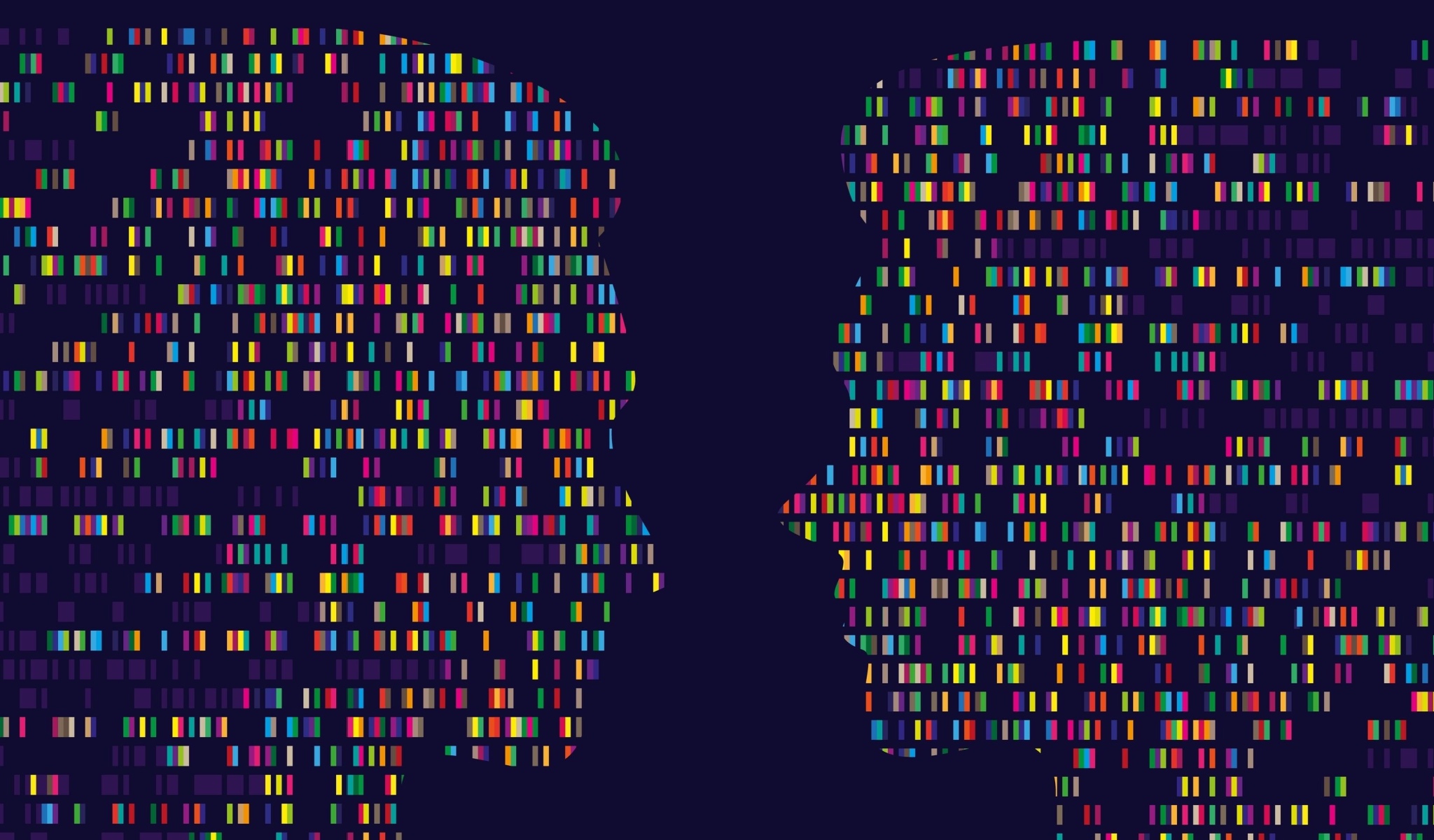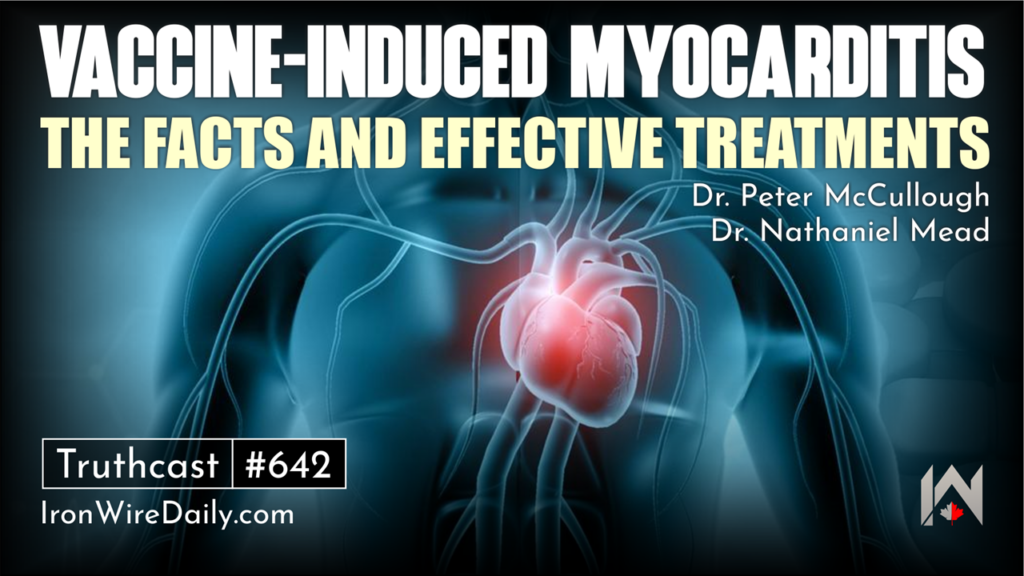Nearly Everything That We’ve Been Told about Genes and Autism Is Wrong

The University of Sydney caps doctoral theses at 80,000 words (excluding references). The theory is that external reviewers don’t want to read more than that (true!). One can apply to the Dean to increase the word limit to 100,000, which is what I did. But my doctoral thesis, as initially written, was closer to 140,000 words. So I had to cut three chapters that I really liked — the political economy of theories of genetic causation, how evidence-based medicine was captured by Big Pharma, and the history of the regulation of mercury.
I believe that some of the information in those excised chapters would be useful to policymakers in Washington, D.C. trying to figure out how to deal with the epidemics of chronic disease in children. So today I am sharing my original (slightly updated), never-before-seen, chapter 6, which challenges the entire paradigm of genetic determinism in disease causation.
I. Introduction
In the first chapter, I showed that the rise in autism prevalence is primarily a story of environmental triggers (with some smaller percentage due to diagnostic expansion and genetics). The story of how genetic theories became the dominant narrative in the autism debate thus needs to be explained. The hegemony of genetic theories of disease causation comes at a tremendous cost to society because they crowd out more promising alternatives. This problem is particularly acute in connection with autism, where genetic research swallows up the vast majority of research funding — and has for more than twenty years. So, one of the keys to effectively addressing the autism epidemic will be to demonstrate the flaws in the genetic approach to disease causation and replace it with a more comprehensive ontology that has better explanatory power.
To put this debate in context, I want to recap the genetic argument in connection with autism as I have presented it thus far. In the 1990s, it was routine for scientists, doctors, and policymakers to assure worried parents that autism was genetic. To the extent that anyone ventured a guess, the explanation was that autism was 90% genetic, 10% environmental. Then the state of California commissioned 16 of the top geneticists in the country (Hallmayer et al. 2011) to study birth records of all twins born in the state between 1987 and 2004. Hallmayer et al. (2011) concluded that at most, genetics explains 38% of the autism epidemic, and they pointed out twice that this was likely an overestimate. Blaxill (2011) argues that the eventual consensus will be 90% environmental, 10% genetic. And in chapter 5, I showed a model from Ioannidis, (2005b, p. 700) that suggests that only 1/10th of 1% of “discovery oriented exploratory research studies” (which include nutrition and genetic studies with massive numbers of competing variables) are replicable.
And yet, a disproportionate share of federal research money in connection with autism is going to study genetic theories of disease causation. In 2013, the Interagency Autism Coordinating Committee spent $308 million on autism research across all federal agencies and private funders participating in research (IACC, 2013a). This is a shockingly low amount to spend on research given estimates that autism is currently costing the US $268 billion a year (Leigh and Du, 2015).
When one drills down into how the IACC spent the $308 million, it is largely focused on genetic research (especially if one examines the funding in the funding category “What Caused This To Happen And Can This Be Prevented?”) (IACC, 2013b). This is in spite of the fact that several groups of leading doctors and scientists including Gilbert and Miller (2009), Landrigan, Lambertini, and Birnbaum (2012), the American College of Obstetricians and Gynecologists (2013), and Bennett et al. (2016) have all concluded that autism and other neurodevelopment disorders are likely caused by environmental triggers.
In this chapter, I will:
- provide a brief history of genetics;
- show that a gene is an idea of how biology might work that has not held up well over time;
- discuss the unknowns unleashed by opening the Pandora’s box of genetic treatments;
- explain more recent breakthroughs and the metaphors used to describe genes;
- document the fruitless search for genes that might explain various mental health conditions;
- review changes in how scientists think about genetics in connection with autism; and
- explore the political economy of genetic research.
First, I will define a few terms used in this chapter (all of which come from NIH). Genetics is “the study of genes and their roles in inheritance.” Genomics is “the study of all of a person’s genes (the genome), including interactions of those genes with each other and with the person’s environment.” And the genome is “the entire set of genetic instructions found in a cell. In humans, the genome consists of 23 pairs of chromosomes, found in the nucleus, as well as a small chromosome found in the cells’ mitochondria. Each set of 23 chromosomes contains approximately 3.1 billion bases of DNA sequence.”
II. A Very Brief History of Genetics
The story of genetics begins with Austrian monk Gregor Mendel in the 1860s and his experiments with pea plants. He examined how flower color and the shape and texture of the seeds were transmitted between generations of pea plants. But Mendel never saw a “gene” (which is a word that was invented after his time); rather, Mendel just thought that some “factor” must surely exist to explain what he was seeing and much of the search over the last 150 years has been an attempt to find that factor (Hubbard, 2013, pp. 17-18).
Mendel’s work languished in obscurity until 1900, when it was rediscovered by biologists who were now able to see structures inside the nucleus of a cell. The Danish botanist Wilhelm Johannsen first used the word “gene” in 1905 in an attempt to describe Mendel’s missing “factors.” But it was still not clear to what biological structure inside the cell the word “gene” might apply. Experiments with fruit flies suggested that “genes must lie along the chromosomes, like beads on a string” but that remained a best guess (Hubbard, 2013, p. 18).
James Watson and Francis Crick (1953) first described the double-helix model of the structure of DNA and they were later awarded a Nobel Prize in Physiology for this discovery. At last it seemed that the location of “the gene” had been found — it was just a question of figuring out which DNA molecule coded for what phenotype. Convinced that they were on to something big, at one point Crick declared to colleagues at the pub that he and Watson had “found the secret of life” (Hubbard, 2013, pp. 19-20).
More recent scholarship reveals that Watson and Crick likely took credit for discoveries initially made by Rosalind Franklin (see “Rosalind Franklin and the Double Helix” [2003] and Rosalind Franklin: The Dark Lady of DNA [2003]).
Congress authorized the Human Genome Project (HGP) in 1984 and it officially launched six years later. The aim of the $3 billion project was to map, for the first time, the more than three billion nucleotide base pairs that make up the human genome. The hope was that in so doing it would enable scientists to identify the genes responsible for everything from heart disease to cancer and develop treatments to improve health and extend life.
The theory behind the HGP — that genes cause many types of disease — seemed promising. Prior to the completion of the HGP, single-nucleotide polymorphisms had been identified that increased the risk of cystic fibrosis, sickle cell anaemia, and Huntington’s disease; a single gene variant had also been associated with Alzheimer’s disease and mutations to two genes, BRCA 1 and 2, are associated with an increased risk of breast cancer (Latham and Wilson 2010). It is little wonder, then, that when autism became a public health concern in the late 1980s, many in the scientific community reached for genetic explanations.
When the first draft of the human genome sequence was announced in June 2000, President Clinton called it “the language in which god created life” (Hubbard, 2013, p. 23). He continued, saying that this discovery would “revolutionize the diagnosis, prevention, and treatment of most, if not all human diseases” (Ho, 2013, p. 287). At a news conference, Francis Collins announced that genetic diagnosis of disease would be accomplished in ten years and treatments would start five years after that (i.e., 2015) (Wade, 2010, para 6). “William Haseltine, the chairman of the board of the Human Genome Sciences, which participated in the genome project, assured us that ‘death is a series of preventable diseases.’ Immortality, it appears was around the corner” (Lewontin, 2011).
But even as the Human Genome Project was nearing completion, there were signs that these claims were overblown. Craig Venter, whose privately funded company Celera Genomics had competed with the publicly funded HGP, said in 2001, “We simply do not have enough genes for this idea of biological determinism to be right. The wonderful diversity of the human species is not hard-wired in our genetic code. Our environments are critical” (McKie, 2001). But a wave of funding rushed in regardless as various biotech companies attempted to turn genetic research into patentable, profitable cures.
In the early 2000s, researchers were largely limited to candidate gene association (CGA) studies. These studies are relatively inexpensive to conduct and begin with likely genetic targets (usually because they have been associated with disease in previous human or animal studies) and then test human subjects who have that disease to see if those same DNA sequences show up (Patnala, Clements, and Batra, 2013). More than 600 associations between particular genes and various diseases were reported (Hirschhorn et al. 2002). But the replication rates were abysmal. Hirschhorn et al. (2002) found that only 3.6% of reported associations were successfully replicated (and even there, the usual caveat applies that correlation does not equal causation).
Soon, however, the cost came down on genome sequencing and hundreds of genome-wide association (GWA) studies were launched to identify the genes associated with about 80 different diseases (Latham and Wilson, 2010). As the name suggests, a GWA study compares the entire genome between different individuals and looks for associations between common traits and particular DNA sequences (Hardy and Singleton, 2009).
The first GWA was published in 2005, and by 2009, 400 genome-wide association studies had been completed at a cost of several million dollars each; but they yielded almost nothing of use (Wade, 2010). Goldstein (2009) in NEJM wrote that genomic research was “packing much less of a phenotypic punch than expected” (p. 1696). Wade (2010) wrote, “Indeed, after 10 years of effort, geneticists are almost back to square one in knowing where to look for the roots of common disease.” Lewontin (2011) wrote, “The study of genes for specific diseases has indeed been of limited value.”
But then a curious thing happened. In the face of overwhelming evidence that CGA and GWA had failed to find an association between genes and most major diseases, genetic researchers regrouped and declared that genes for various diseases surely must exist; the problem was just that the tools for finding them were inadequate or the genes were hiding in unexpected places (Manolio et al., 2009; Eichler, et al., 2010). Geneticists started calling these unseen genes “dark matter” with the justification that “one is sure it exists, can detect its influence, but simply cannot ‘see’ it (yet)” (Manolio et al. 2009).
Investors and government seem persuaded by this “dark matter” theory and continue to pour billions of dollars into genetic and genomic research. But a growing chorus of critics has stepped forward to make the case that genetic theories of disease represent an outdated, unscientific, and/or ethically dubious paradigm that should be replaced with more accurate representations of biological systems. Krimsky and Gruber (2013) gathered 17 of these critics in the edited volume Genetic Explanations: Sense and Nonsense, and I build off of their work in the rest of this chapter.
III. A Gene Is an “Idea” but Not Actually Reflective of How Biology Works
Many of the authors in Krimsky and Gruber (2013) argue that the idea of a “gene” — a single master molecule that contains a blueprint that drives phenotypic outcomes — is a myth that does not accurately describe how cells and organisms work. Krimsky (2013) explains that one of the ways that Watson and Crick popularized their discovery of DNA was through constructing a metallic model of the double helix. He calls that the “Lego model” and argues that it has since undergone considerable revision (Krimsky, 2013, p. 3).
Rather than seeing genes as fixed entities in a static structure awaiting self-activation, the current conception views the genome as more characteristic of an ecosystem — more fluid, more dynamic, and more interactive than the Lego model implies (Krimsky, 2013, p. 4).
Dupré (2012) argues that DNA is neither a blueprint nor a computer code for biological outcomes but rather a sort of warehouse that the body can draw upon for a range of different purposes.
The assumption that identifiable bits of DNA sequence are even “genes” for particular proteins has turned out not to be generally true. Alternative splicing of fragments of particular sequences, alternative reading frames, and post-transcriptional editing — some of the things that happen between the transcription of DNA and the formatting of a final protein product — are among the processes the discovery of which had led to a radically different view of the genome…. Coding sequences in the genome are therefore better seen as resources that are used in diverse ways in a variety of molecular processes and that can be involved in the production of many different cellular molecules than as some kind of representation of even a molecular outcome, let alone a phenotypic one (Dupré, 2012, pp. 264–265).
Richards (2001), in a passage that builds off of earlier critiques by Dennett (1995) and Lewis (1999) complains that, “Molecular genetics often has the feel of greedy reductionism, trying to explain too much, too fast, under-estimating the complexity and skipping over whole levels of process in the rush to link everything to the foundations of DNA” (p. 673).
IV. Cultural Constructs and Unpredictable Outcomes
Hubbard (2013) confirms that recent discoveries have suggested that biology works differently than Mendel imagined. And it turns out that the idea of something like a gene is often imbued with the cultural assumptions of the researchers of the era.
Hubbard (2013) writes, “The usual shorthand ‘the gene for’ must not be taken literally. Yet this way of thinking about genes has turned DNA into the ‘master molecule,’ while proteins are said to fulfill ‘housekeeping’ functions. (And one need not be a raving postmodernist to detect class, race, and gender biases in this way of describing the molecular relationships.)” (p. 23).
The Cartesian reductionism that characterizes much of the public health debate about genetic causation of disease may actually impede paradigm shifts because billions of dollars are spent on the search for “the gene for” when in in fact, the human organism and DNA itself do not work that way.
In a sense, spelling out the sequences of As, Gs, Cs, and Ts that constitute the human genome does not put us conceptually that far ahead of where we were at [at] the beginning of the twentieth century, when biologists first decided that chromosomes and their genes play a fundamental role in the way cells and organisms are replicated but had no idea how that might happen (Hubbard, 2013, p. 24).
Hubbard (2013) points out that lost amidst the exuberance of the discovery of DNA and the double helix and the mapping of the human genome lies the potential for unintended consequences. Biological systems are more complex than the monogenic theory of disease causation suggests. This means that one simply cannot know how genetically engineered interventions will turn out.
Biotechnology — the industry of “genetic engineering” — is built on the pretense that scientists not only understand but also can anticipate and direct the functions of the DNA sequences they isolate from organisms or manufacture in the laboratory. The industry cheerfully promises that it can foresee the potential effects of transferring specific DNA sequences, wherever and however obtained, into bacteria, plants, or animals, including humans, and thus improve targeted characteristics. In reality, such operations can have three possible outcomes: (1) in the inhospitable environment of the cells of the host species, inserted DNA sequences do not succeed in specifying the intended proteins, so nothing new happens; (2) the inserted sequence mediates the synthesis of the desired protein product in the right amounts and at the right time and location; and (3) unpredicted and unintended consequences follow because the inserted DNA gets spliced into the wrong place in the genome of the host organism and disrupts or adversely alters one or more of its vital functions.
The first alternative wastes time and money, the second is the hope, and the third spells danger. Yet which of them happens cannot be predicted a priori, or from one genetic manipulation to another, because the conditions within and around the host organisms are likely to change over time.
If Hubbard is correct — that one cannot predict ahead of time how a genetically modified organism will impact its host — that potentially has profound implications for the autism debate. That is because one of the changes that followed the passage of the 1986 National Childhood Vaccine Injury Act was the introduction of genetically engineered vaccines — starting with the Hepatitis B vaccine in 1987. Four genetically engineered vaccines are currently on the CDC’s recommended schedule for the whole population: Hepatitis B, human papillomavirus (HPV), influenza, and Covid-19. Since 2006, the MMRII has been grown in a medium that includes recombinant (genetically engineered) human albumin (Wiedmann, et al. 2015, p. 2132).
There is concern amongst some researchers that the Hepatitis B vaccine may be responsible for the surge in autism prevalence (Gallagher and Goodman, 2008 and 2010; Mawson et al., 2017a and 2017b). But one does not even need to accept the conclusions of these studies or the first-hand accounts of parents in order to be concerned. Hubbard (2013) is saying that genetic engineering is a field still in its infancy, still unable to accurately predict its effects. For policymakers to then require medical interventions involving genetically modified organisms from the first day of life as a condition of citizenship (for admission to day care, schools, some jobs, welfare benefits, etc.) seems an extraordinary overreach that potentially opens the door to unintended consequences.
V. Toward a New Understanding of (and a Better Set of Metaphors to Describe) Genetic Science
Keller (2013), Moore (2013), and Talbott (2013) argue that the idea of the “gene” is outdated and an attempt to describe the current state of genetic science more accurately.
Keller (2013) notes that “the early days of the Human Genome Project brought the promise that in time we would be able simply to replace defective sequences with normal ones (gene therapy), but that hope has failed to materialize” (p. 38). The reason it has failed to materialize is that our current understanding of how DNA works is radically different from how Mendel, Watson, and Crick, or even the Human Genome Project, initially conceived of it (p. 38).
[T]he causal interactions among DNA, proteins, and trait development are so entangled, so dynamic, and so context dependent that the very question of what genes do no longer makes very much sense. Indeed, biologists are no longer confident that it is possible to provide an unambiguous answer to the question of what a gene is. The particulate gene is a concept that has lent itself to increasing ambiguity and instability over the years, and some have begun to argue that the concept has outlived its productive prime. (Keller, 2013, p. 40)
As mentioned above, Mendel’s “factors” were described as akin to a master giving instructions to a servant. Later metaphors for genes included the gene and/or cell and/or body as a machine and DNA as a computer code that the body then carries out. Keller (2013) argues that all of these notions are outdated, as is the view that DNA is a causal agent:
[T]oday’s biologists are far less likely than their predecessors were to attribute causal agency either to genes or to the DNA itself. They recognize that however crucial the role of DNA in development and evolution is, it does not do anything by itself. It does not make a trait; it does not even encode a “program” for development. Rather, it is more accurate to think of a cell’s DNA as a standing resource on which it can draw for survival and reproduction, a resource it can deploy in many different ways, a resource so rich as to enable it to respond to its changing environment with immense subtlety and variety. As a resource, DNA is certainly indispensable — arguably it can even be said to be a primary resource — but it is always and necessarily embedded in an immensely complex and entangled system of interacting resources that collectively are what give rise to the development of traits (p. 41).
Print media, the internet, and TV news programs are full of stories about the discovery of a gene for everything from obesity to infidelity to political affiliation. Moore (2013) argues that this runs counter to how most geneticists think about their research:
[M]ost scientists who actually study the genetic material, DNA, no longer believe that genes single-handedly determine any of these sorts of characteristics. Amazingly, there is also a growing consensus among these scientists that we need to rethink one of the assumptions at the center of that assumption: namely, that there are such things as genes in the first place (p. 43).
One of the many problems with monogenic theories is that they overlook the role of the environment and other biological systems in the body. Moore (2013) writes:
[B]iologists have learned that our characteristics always emerge following the process of development, which always entails interactions between DNA and environmental factors (Gottlieb et al. 1998, Lickliter and Honeycutt, 2010, Meaney, 2010, and Moore, 2006). These factors include both the environment outside our bodies and non-genetic factors (such as hormones, for example) that are inside our bodies (and many of these non-genetic factors in our bodies can be influenced by the environment outside our bodies). Thus, although our traits are always influenced by genetic factors, they are always influenced by non-genetic factors, too; genes do not determine our characteristics, as Mendelian theory implies (p. 46).
Increasingly, the deterministic account of Mendel has been replaced by an understanding that the same strand of DNA can operate in a wide variety of different ways depending on its interactions with other parts of the cell, hormones, and environmental factors:
We now know that DNA cannot be thought of as containing a code that specifies particular predetermined (or context independent) outcomes (Gray, 1992). In fact, what this means is that the same segment of DNA can do two entirely different things in different bodies (because different bodies can provide different contexts for their genes)….Indeed, a large team of biologists recently concluded that the various protein products coded for by “individual mammalian genes…may have related, distinct, or even opposing functions” (Wang et al. 2008) (in Moore, 2013, p. 47).
Moore (2013) even challenges the conventional understanding of three prototypical cases where it at first appeared that a single “gene” (or the absence of a single “gene”) caused a disease:
Even the symptoms of diseases like phenylketonuria, cystic fibrosis, and sickle-cell anemia — all of which are conditions that were once thought of as being directly caused by the actions of single genes — are now recognized as phenotypes caused by a variety of factors that interact in complex ways during development (Estivill, 1996; Scriver and Waters (1999) (p. 48).
Talbott (2013) provides some helpful new conceptual metaphors that better reflect the current state of thinking in genetic research.
Signaling pathways are vital means of communication within and between cells. In the machine model of the organism, such pathways were straightforward, with a clear-cut input at the start of the pathway leading to an equally clear-cut output at the end. Not so today, as a team of molecular biologists at the Free University of Brussels found out when they looked at how these pathways interact or “crosstalk” with one another. Tabulating the cross-signalings among just four such pathways yielded what they called a “horror graph,” and quickly it began to look as though “everything does everything to everything.” In reality, we see a “collaborative” process that can be “pictured as a table around which decision-makers debate a question and respond collectively to information put to them.” (Dumont et al., 2001; Levy et al. 2010)…. “The activated receptor looks less like a machine and more like a pleiomorphic ensemble or probability cloud of an almost infinite number of possible states, each of which may differ in its biological activity” (Mayer et al., 2009, p. 81) (in Talbott, 2013, p. 52).
In more recent genetics research, one sees the same entity express itself in different ways. Talbott (2013) writes, “[T]he ‘same’ proteins with the same amino-acid sequences can, in different environments, ‘be viewed as totally different molecules’ (Rothman, 2002, p. 265) with distinct physical and chemical properties” (p. 53).
Talbott (2013) argues that the static, mechanistic, and deterministic metaphors that are used in the popular press do not reflect the latest thinking amongst geneticists themselves.
[T]he [cell] nucleus is not a passive, abstract space filled with mechanisms but rather a dynamic, expressive space. Its performance is part of the choreography that many researchers speak of today, and the performance cannot be reduced to any sort of computer-like genetic code. The cell nucleus, in its plastic spatial gesturing, is more like an organism than a machine.
Interestingly, Talbott (2013) indicates that genetics itself may bear some responsibility for this misunderstanding of their work:
The chromosome, no less than the organism as a whole, is a living, continually metamorphosing sculpture. That is, it lives by and expresses itself in gestural activity. The truth here could hardly be further from the countless images transmitted through the popular media to a public that has no means to correct them. Nor does it sit well with the ubiquitous references to “mechanisms” and “mechanistic explanations” by the very biologists making all these recent discoveries (Talbott, 2013, p. 55).
The more scientists discover about the actual workings of genetics, the more it reveals how little we know about disease causation; but reductionist narratives about genetic causation persist because they are profitable.
VI. The Fruitless Search for Genes in Psychiatry and Psychology
Monogenic theories of disease causation are problematic in general and particularly problematic in connection with psychiatric disorders. One can make the case that autism spectrum disorder (ASD) is not properly understood as a psychiatric disorder, given that it appears to involve pathologies in a whole host of different systems from the gut to the central nervous system. But the DSM-V lists ASD as a psychiatric disorder, so for the purposes of this discussion, I will focus on the failures to identify genes for various psychiatric disorders. Risch et al. (2009) observed that “few if any of the genes identified in candidate gene association studies of psychiatric disorders have withstood the test of replication” (p. 2463 in Joseph and Ratner, 2013, p. 95).
Joseph and Ratner (2013) argue that there are two possible explanations for the fact that “the genes for” various psychiatric conditions have not been discovered in spite of extensive research (p. 95). On the one hand, perhaps such genetic sequences do exist, but simply have not been found because the methods are inadequate or the sample sizes are too small. This is the explanation favored by genetics researchers, investors, and government health agencies. On the other hand, there is the possibility that “genes for” psychiatric disorders do not exist at all. This is the view favored by Joseph and Ratner (2013).
Latham and Wilson (2010) note that with a few exceptions, “according to the best available data, genetic predispositions (i.e. causes) have a negligible role in heart disease, cancer, stroke, autoimmune diseases, obesity, autism, Parkinson’s disease, depression, schizophrenia and many other common mental and physical illnesses…” They continue, “This dearth of disease-causing genes is without question a scientific discovery of tremendous significance…it tells us that most disease, most of the time, is essentially environmental in origin” (Latham and Wilson, 2010).
Even much-relied-upon twin studies, which are the stock-in-trade of genetic researchers, have come under renewed criticism.
Kinship studies of families, twins, and adoptees are known collectively as “quantitative genetic research.” Although family studies constitute a necessary first step, they are widely seen as being unable to disentangle the potential roles of genetic and environmental factors. Because family members share a common environment as well as common genes, a finding that a trait “runs in the family” can be explained on either genetic or environmental grounds (Joseph and Ratner, 2013, pp. 96-97).
Joseph and Ratner (2013) argue that:
The twin method is a faulty instrument for assessing the role of genetics, given the likelihood that MZ [monozygotic aka “identical”] versus same-sex DZ [dizygotic aka “fraternal”] comparisons measure environmental rather than genetic influences. Therefore, all previous interpretations of the twin method’s results in support of genetics are potentially wrong….[W]e agree with three generations of critics who have written that the twin method is no more able than a family study to disentangle the potential roles of nature and nurture (p. 100).
If twin studies themselves are problematic then that changes things considerably in the autism debate where twin studies are routinely accepted at face value by public health officials.
VII. Changes in How Scientists Think about Genetics in Connection with Autism Spectrum Disorders
Herbert (2013) confirms the criticisms of genetic theories of causation, specifically as they pertain to autism. She writes, “evidence is shifting the conception of autism from a genetically determined, static, lifelong brain encephalopathy to a multiply determined dynamic systems disturbance with chronic impacts on both brain and body” (p. 129).
Later, she recognizes environmental theories of causation:
Documentation of brain inflammation and immune activation in autism changed the playing field because it became clear that we were not dealing with healthy tissue that was wired differently but rather with brains that were having health problems with their cells (p. 136).
She continues:
Given the clinical observations of transient improvement, persistent remission or recovery, and response to metabolic intervention, it becomes necessary to ask whether the brain in autism is truly and intrinsically “defective” or is instead “obstructed,” at least in many cases. These many clinical episodes indicate that the brain capacity is present, at least in many cases, but that there is a problem with organizing the means of expression, with organizing sensations into perceptions and constructs, or both. Autism from this point of view becomes more of an “encephalopathy” — an obstruction of brain function, possibly through an encephalopathy related to immune activation or metabolic dysfunction. If this is the case, research and care ought to be oriented much more to overcoming the encephalopathy so that people can express their full potential (p. 139).
Herbert (2013) portrays the field of genetics as blinded by their own hubris. She makes the case that given alarmingly high (and rising) autism rates, “anything we can do sooner rather than later to stem the tide ought to make eminent public health sense” (Herbert, 2013, p. 144). And she argues, “Clearly, gene myths are a problem in autism and are among the forces putting obstacles in the way of implementing a full-force public health campaign to reduce environmental risks” (Herbert, 2013, pp. 145-146).
Herbert (2013) also hints at the need for a sort of medicine from below. She writes:
The taboos around some of the alternative treatments used by parents have stopped many professionals cold from even familiarizing themselves with the methods and rationales of these approaches. Over time, as success stories have accumulated of children (and even some adults) greatly reducing the severity of their problems and sometimes even losing their diagnoses, some serious scientific attention has begun to be paid to these phenomena. As mentioned earlier, the basic principles of these therapies include tackling subcomponents of “the autism” as problems that can be solved and thereby reducing the stress on the whole system so that it has more of a chance to recalibrate (p. 145).
If, as Herbert suggests, parents, not doctors, are at the leading edge of researching treatments, that would seem to open up a whole host of questions about epistemology and the current state of science and medicine. The epistemological hierarchy set up by mainstream science and medicine has medical specialists above doctors who are above parents. But is it possible that in the case of autism, this hierarchy has it backwards? Furthermore, if, as Herbert argues, the observations and intuitions of parents produce better treatment outcomes, might they also be right about the causes of autism?
VIII. The Political Economy of Genetic Research
So if monogenic explanations for disease are not consistent with the scientific evidence of how most diseases work, then why do biotech companies, popular media, and the CDC continue to promote the search for such explanations?
Clearly, the model underlying the promise of genetic engineering is overly simplistic. But what makes the situation even more problematic is that DNA sequences, once isolated or synthesized, as well as the cells, organs, or organisms into which they are inserted, can be patented and thereby become forms of intellectual property. The science and the business of genetic engineering have become one, and efforts at basic understanding compete with the pursuit of profits. The usual professional rivalries are enhanced by major financial rivalries, and the complete interlinking of government, universities, and industry leaves hardly any disinterested scientists who are devoid of conflicts of interest and can be trusted to evaluate and critique proposed scientific models or their practical implementation without raising suspicions of pursuing financial interests. As the biotechnology industry expands its reach, the health hazards and environmental pollution it produces are added to those chemistry and physics bequeathed us during the twentieth century (Hubbard, 2013, p. 25).
Gruber (2013) is troubled by the political economy of genetic research.
There continues to be a large gap between basic [genetic] research and clinical applications, and that gap has become filled with exaggeration, hyperbole, and outright fraud. Just as eugenicists in the twentieth century became entranced with the work of Gregor Mendel and sought to apply principles of genetics to social theory, so too have molecular biologists and the academic, commercial, and policy communities in which they operate become ensconced in a worldview that sees the field of genomics as the most fundamental mechanism for improving the human condition p. 271).
Gruber (2013) argues that current genetic research is “full of hubris and bordering on faith” (p. 271). Gruber (2013) argues that genomics has not delivered on its early promise and that the turn towards this sort of research has resulted in a decline in useful innovations.
But as pharmaceutical and biotechnology companies have increasingly focused their research and development investments on genomics, there has been a corresponding and precipitous drop in productivity. They have been unable to sustain sufficient innovation to replace the loss of revenues due to patent expirations for successful products. Criticisms of this unsustainable downward trend have largely focused on a mixture of excessive regulation, rising costs, shorter product life cycles, and internal inefficiencies. Even if these factors are accepted as correct, however, they simply cannot explain why between 1998 and 2008 the output of new molecular entities (NMEs) dropped by almost 50 percent, and the success of late-stage clinical trials dropped equally dramatically (Pammolli and Riccaboni, 2008) (p. 274).
Genetic and genomic research is driven not so much by Merton’s idealized search for scientific knowledge nor even by traditional capitalist forces of supply and demand for products that meet a need in society. Rather, genetics and genomics exist through a unique combination of government funding created by biotech lobbying for that funding and speculative investment that is trading more on hope and hype than evidence of effective treatments (Gruber, 2013, p. 100). The total market capitalization of the top 25 biotechnology (which includes genetics and genomics) companies was $990.89 billion in 2014, $1.225 trillion in 2015, and $1.047 trillion in 2016 (Philippis, 2016). The US spends more than any other nation on genetics research (35% of the world total); one-third of the total comes from government and two-thirds from private investment (Pohlhaus and Cook-Deegan, 2008).
The Biotechnology Innovation Organization (BIO) is the primary trade association for the genetics and genomics industry. BIO was formed in 1993 as the result of the merger of two smaller biotechnology industry associations (Sourcewatch, n.d.). Its more than 1,100 members include both genetics and genomics firms in addition to a wide range of pharmaceutical, agricultural, and medical companies that employ 1.6 million people in the US (BIO, 1993). From 2007 to 2016, BIO spent an average of $8 million a year on lobbying (Sourcewatch, n.d.). It has been remarkably successful at lobbying the US government for funding, regulatory rules, and tax provisions that benefit member companies.
For example, from 1993 to 2014 the budget of the NIH increased from $10 billion to over $30 billion. In 2016 the NIH budget was $32.6 billion of which $8.265 billion was devoted to genetic and genomic research which includes the categories Genetics, Gene Therapy, Gene Therapy Clinical Trials, and Genetic Testing (U.S. DHHS, 2016). But this underestimates the total spent on genetic research because there is also genetic research happening within other disease categories in the NIH budget. BIO secured $1 billion in tax credits for biotech companies in the 2011 federal health-care legislation (Gruber, 2013, p. 277). BIO routinely pushes the FDA for faster approval times for medical interventions (Weisman, 2012).
Gruber (2013) notes that many academics and university science departments have grown wealthy through their ties with biotech firms. “Universities should be places where healthy skepticism of claims about science and its applications are pursued. But more than almost any other high-technology business, the biotechnology industry maintains extremely close ties with leading academic institutions…” (Gruber, 2013, p. 277).
Public funding for genetic research persists in spite of the fact that it is a less promising approach than mitigating environmental or lifestyle factors. “Given the many complex interactions that underlie almost all human diseases, even improving existing approaches to identifying and modifying genetic risk factors will often have significantly less value than modifying non-genetic risk factors” (Gruber, 2013, p. 280). But again, addressing environmental or lifestyle factors — doing less of the things that cause harm — is generally not profitable. Because US elected officials and regulators are captured by corporate interests, Congress funds genetic research to the exclusion of more promising (but less profitable) pathways.
Like Herbert (2013), Gruber (2013) sees the misplaced focus on genetics as crowding out more promising research while producing little improvement in public health. “The promise of genomics may have provided policy makers with a simple narrative of basic health research investment, but it has led to poor decision making on their part and has proved to be an insufficient standard bearer in the fight to improve the human condition” (Gruber, 2013, p. 282).
Like Mirowski (2011), Gruber (2013) sees an entire system that is dangerously out of balance.
Although those operating out of pure economic interest share much of the blame for the current exaggerated position genomics hold in overall research focus, it is ultimately the scientists and researchers themselves who bear much of the responsibility. The current system for assessing research productivity, combined with the demands to publish and attract both private and governmental research funding, puts enormous pressure on researchers to make, publicize, and defend “breakthrough” discoveries. This is compounded by the added pressure of journals to publish “impact” articles. As a result, few genomics researchers publicly speak out, and the resulting void has been filled with a distortion of science without parallel in any other discipline (p. 282).
Latham and Wilson (2010) have the sharpest political economy critique of all:
Politicians like genetic determinism as a theory of disease because it substantially reduces their responsibility for people’s ill-health….Corporations like genetic determinism, again because it shifts blame….Medical researchers are also partial to genetic determinism. They have noticed that whenever they focus on genetic causation, they can raise research dollars with relative ease….Recognizing their value, these groups have tended to elevate genetic explanations for disease to the status of unquestioned scientific facts, thus making their dominance of official discussions of health and disease seem natural and logical. This same mindset is accurately reflected in the media where even strong environmental links to disease often receive little attention, while speculative genetic associations can be front page news. It is astonishing to think that all this has occurred in spite of the reality that genes for common diseases were essentially hypothetical entities.
As it relates to autism, what started out looking like the epitome of cutting edge science in the race to understand a disease, starts to look like a distortion of science and a distraction from more promising research pathways driven by financial interests rather than concern for public health.
IX. Conclusion
In the 1990s and 2000s government and industry had a theory of the case — that genes are responsible for disease — that has now been largely refuted. In the meantime an entire industry and public health infrastructure was built around this idea. So when the underlying theory was discredited, proponents simply modified the theory (to the search for the “missing dark matter”) so that the industry could keep going and continue to receive government funding. When this evolving research agenda produces profitable corporations and well-paid scientists but little to nothing that reduces human suffering it is an enormous problem for society.
The fact remains that Gilbert and Miller (2009), Landrigan, Lambertini, and Birnbaum (2012), the American College of Obstetricians and Gynecologists (2013), and Bennett et al. (2016) have all concluded that autism and other neurodevelopment disorders are likely caused by environmental triggers and are thus preventable through law and policy. Even if sophisticated genetic and genomic research is able to find ways to reduce symptoms and severity, it is still going to be orders of magnitude more cost-effective (not to mention more ethical) to prevent autism in the first place by keeping toxic chemicals out of children’s bodies.
Currently, genetic research is soaking up the vast majority of autism research funding and preventing more effective prevention strategies from emerging. This appears to be a reflection of the political power of biotech firms to shape the research agenda to serve their interests rather than a reflection of best practices in science or the best interests of society.
References
American College of Obstetricians and Gynecologists. (2013). Exposure to toxic environmental agents. Committee Opinion No. 575. Fertility and sterility 100, no. 4 (2013): 931-934. https://doi.org/10.1016/j.fertnstert.2013.08.043
Bennett, D., Bellinger, D. C., & Birnbaum, L. S. et al. (2016). Project TENDR: targeting environmental neuro-developmental risks the TENDR consensus statement. Environmental health perspectives, 124(7), A118. https://doi.org/10.1289/EHP358
BIO. (2013, June 4). Biotechnology Industry Organization Joins Coalition of Small Business Innovators. Press release. https://archive.bio.org/media/press-release/bio-joins-coalition-small-business-innovators
Birch, K. (2017). Rethinking Value in the Bio-Economy: Finance, Assetization, and the Management of Value. Science, Technology, & Human Values, 42(3), 460-490. https://doi.org/10.1177/0162243916661633
Blaxill, M. (2011). New Autism Twin Study Demolishes Decades-Long Belief in Genetic Causation. Age of Autism. Retrieved from http://www.ageofautism.com/2011/07/new-autism-twin-study-demolishes-decades-long-belief-in-genetic-causation.html
Centers for Disease Control and Prevention. (2015). Immunology and Vaccine-Preventable Diseases, Pink Book, Principles of Vaccination. https://www.cdc.gov/pinkbook/hcp/table-of-contents/index.html
Cranor, C. F. (2013). Assessing Genes as Causes of Human Disease in a Multicausal World. In Krimsky, S. and Gruber, J. (editors). Genetic Explanations: Sense and Nonsense(pp. 107-121). Cambridge, Massachusetts: Harvard University Press.
Dennett, D. C. (1995). Darwin’s Dangerous Idea: Evolution and the Meanings of Life. New York: Touchstone.
Dietert, R. (2016). The human superorganism: how the microbiome is revolutionizing the pursuit of a healthy life. New York: Penguin.
Dupré, J. (2012). Processes of life: essays in the philosophy of biology. Oxford: Oxford University Press.
Eichler, E. E., Flint, J., Gibson, G., Kong, A., Leal, S. M., Moore, J. H., & Nadeau, J. H. (2010). Missing heritability and strategies for finding the underlying causes of complex disease. Nature Reviews Genetics, 11(6), 446–450. http://doi.org/10.1038/nrg2809
Food and Drug Administration. (2017). FDA announces comprehensive regenerative medicine policy framework. FDA News Release. https://www.fda.gov/NewsEvents/Newsroom/PressAnnouncements/ucm585345.htm
Gallagher, C. and Goodman, M. (2008). Hepatitis B triple series vaccine and developmental disability in US children aged 1–9 years. Toxicology and Environmental Chemistry, 90: 997–1008. https://doi.org/10.1080/02772240701806501
Gallagher, C. M., & Goodman, M. S. (2010). Hepatitis B vaccination of male neonates and autism diagnosis, NHIS 1997–2002. Journal of Toxicology and Environmental Health, Part A, 73(24), 1665-1677. https://doi.org/10.1080/15287394.2010.519317
Gilbert, Steven & Miller, Elise. (2009). Scientific Consensus Statement on Environmental Agents Associated with Neurodevelopmental Disorders. Neurotoxicology and Teratology, 31. 241-242. https://www.healthandenvironment.org/uploads-old/LDDIStatement.pdf
Goldstein, D. B. (2009, April 23). Common Genetic Variation and Human Traits. NEJM, 360:1696-1698. https://doi.org/10.1056/NEJMp0806284
Gruber, J. (2013). The Unfulfilled Promise of Genomics. In Krimsky, S. and Gruber, J. (editors). Genetic Explanations: Sense and Nonsense (pp. 270-282). Cambridge, Massachusetts, Harvard University Press.
Hallmayer, J., Cleveland, S., Torres, A., Phillips, J., Cohen, B., Torigoe, T., … & Lotspeich, L. (2011). Genetic heritability and shared environmental factors among twin pairs with autism. Archives of general psychiatry, 68(11), 1095-1102. https://doi.org/10.1001/archgenpsychiatry.2011.76
Hardy, J., and Singleton, A. (2009, April 23). Genomewide Association Studies and Human Disease. NEJM; 360:1759-1768. https://doi.org/10.1056/NEJMra0808700
Herbert, M. R. (2013). Assessing Genes as Causes of Human Disease in a Multicausal World. In Krimsky, S. and Gruber, J. (editors). Genetic Explanations: Sense and Nonsense (pp. 122-146). Cambridge, Massachusetts, Harvard University Press.
Hirschhorn, J. N., Lohmueller, K., Byrne, E. and Hirschhorn, K. (2002). A comprehensive review of genetic association studies. Genetics in Medicine, 4, 45–61. https://doi.org/10.1097/00125817-200203000-00002
Ho, M-W. (2013). Nurturing Nature: How Parental Care Changes Genes. In Krimsky, S. and Gruber, J. (editors). Genetic Explanations: Sense and Nonsense (pp. 256-269). Cambridge, Massachusetts, Harvard University Press.
Hubbard, R. (2013). The Mismeasure of the Gene. In Krimsky, S. and Gruber, J. (editors). Genetic Explanations: Sense and Nonsense (pp. 17-25). Cambridge, Massachusetts, Harvard University Press.
Ioannidis, J. P. (2005). Why most published research findings are false. PLoS medicine, 2(8), e124. https://doi.org/10.1371/journal.pmed.0020124
Interagency Autism Coordinating Committee. (2013a). Autism Research Database: 2013: Funders. https://iacc.hhs.gov/funding/
Interagency Autism Coordinating Committee. (2013b). Autism Research Database: 2013: Strategic Plan Objectives. https://iacc.hhs.gov/funding/data/strategic-plan-objectives/?fy=2013
Joseph, J. and Ratner, C. (2013). The Fruitless Search for Genes in Psychiatry and Psychology: Time to Reexamine a Paradigm. In Krimsky, S. and Gruber, J. (editors). Genetic Explanations: Sense and Nonsense (pp. 94-106). Cambridge, Massachusetts: Harvard University Press.
Keller, E. V. (2013). Genes as Difference Makers. In Krimsky, S. and Gruber, J. (editors). Genetic Explanations: Sense and Nonsense (pp. 34-42). Cambridge, Massachusetts: Harvard University Press.
Krimsky, S. and Gruber, J. (editors) (2013). Genetic Explanations: Sense and Nonsense. Cambridge, Massachusetts: Harvard University Press.
Landrigan, P. J., Lambertini, L., & Birnbaum, L. S. (2012). A research strategy to discover the environmental causes of autism and neurodevelopmental disabilities. Environmental health perspectives, 120(7), a258. https://doi.org/10.1289/ehp.1104285
Latham, J. and Wilson, A. (2010). The Great DNA Data Deficit: Are Genes for Disease a Mirage? Bioscience Research Project. Retrieved from https://www.independentsciencenews.org/health/the-great-dna-data-deficit/
Leigh, J. P., & Du, J. (2015). Brief report: Forecasting the economic burden of autism in 2015 and 2025 in the United States. Journal of autism and developmental disorders, 45(12), 4135-4139. https://doi.org/10.1007/s10803-015-2521-7
Levins, R., & Lewontin, R. C. (1985). The dialectical biologist. Cambridge, Massachusetts: Harvard University Press.
Lewis, J. (1999). The performance of a lifetime: a metaphor for the phenotype. Perspectives in biology and medicine, 43(1), 112-127. https://doi.org/10.1353/pbm.1999.0053
Lewontin, R. C. (2011, May 26). It’s Even Less in Your Genes. NY Review of Books. http://www.nybooks.com/articles/2011/05/26/its-even-less-your-genes/
Lewontin, R., & Levins, R. (2007). Biology under the influence: Dialectical essays on the coevolution of nature and society. New York: NYU Press.
Manolio, T. A., Collins. F. S., Cox, N. J., Goldstein, D. B., Hindorff, L. A., Hunter, D. J., McCarthy, M. I., et al. (2009, 8 October). Finding the missing heritability of complex diseases. Nature, 461, 747-753. https://doi.org/10.1038/nature08494
McKie, R. (2001, February 11). Revealed: the secret of human behaviour. Environment, not genes, key to our acts. the Guardian, Feb 11, 2001. https://www.theguardian.com/science/2001/feb/11/genetics.humanbehaviour
Moore, D. S. (2013). Big B, Little b: Myth #1 Is that Mendelian Genes Actually Exist. In Krimsky, S. and Gruber, J. (editors). Genetic Explanations: Sense and Nonsense (pp. 43-50). Cambridge, Massachusetts: Harvard University Press.
National Institutes of Health, Office of Budget. (n.d.) Appropriations History by Institute/Center (1938 to Present). https://officeofbudget.od.nih.gov/approp_hist.html
National Institutes of Health, National Human Genome Research Institute (n.d.). Glossary. https://www.genome.gov/glossary/
Patnala, R., Clements, J., and Batra, J. (2013). Candidate gene association studies: a comprehensive guide to useful in silico tools. BMC Genetics, 14:39. https://doi.org/10.1186/1471-2156-14-39
Philippidis, A. (2016, September 26). Top 25 Biotech Companies of 2016: Wall Street Decline Takes Its Toll on Market Capitalizations. Genetic Engineering and Biotechnology News. Retrieved from http://www.genengnews.com/the-lists/top-25-biotech-companies-of-2016/77900741
Pohlhaus, J. R., & Cook-Deegan, R. M. (2008). Genomics research: world survey of public funding. BMC Genomics, 9(1), 472. https://doi.org/10.1186/1471-2164-9-472
Richards, M. (2001). How distinctive is genetic information? Studies in History and Philosophy of Science Part C: Studies in History and Philosophy of Biological and Biomedical Sciences, 32(4), 663-687. https://doi.org/10.1016/S1369-8486(01)00027-9
Sourcewatch. (n.d.) Summary: Annual lobbying by Biotechnology Industry Association. https://www.opensecrets.org/lobby/clientsum.php?id=D000024369
Talbott, S. L. (2013). The Myth of the Machine-Organisms: From Genetic Mechanisms to Living Beings. In Krimsky, S. and Gruber, J. (editors). Genetic Explanations: Sense and Nonsense (pp. 51-68). Cambridge, Massachusetts: Harvard University Press.
U.S. Department of Health and Human Services, (2016, February 10). Estimates of Funding for Various Research, Condition, and Disease Categories (RCDC).
Velasquez-Manoff, M. (2017, June 17). The Upside of Bad Genes. NY Times, June 17, 2017. https://www.nytimes.com/2017/06/17/opinion/sunday/crispr-upside-of-bad-genes.html
Wade, N. (2010, June 12). A Decade Later, Genetic Map Yields Few New Cures. NY Times, June 13 2010. http://www.nytimes.com/2010/06/13/health/research/13genome.html
Watson, J. D., & Crick, F. H. (1953). Molecular structure of nucleic acids. Nature, 171(4356), 737-738. https://www.nature.com/articles/171737a0
Weisman, R. (2012, June 19). Federal drug review nettles biotech industry: Concern evident on eve of Boston expo. Boston Globe, Jube 18, 2012. http://www.bostonglobe.com/business/2012/06/18/fda-under-spotlight-biotechnology-industry-organization-bio-convention-opens-boston/JW4lLh22mJwPN5ot2z8MtJ/story.html
Wiedmann, R. T., Reisinger, K. S., Hartzel, J., Malacaman, E., Senders, S. D., Giacoletti, K. E., … & Musey, L. K. (2015). MMR® II manufactured using recombinant human albumin (rHA) and MMR® II manufactured using human serum albumin (HSA) exhibit similar safety and immunogenicity profiles when administered as a 2-dose regimen to healthy children. Vaccine, 33(18), 2132-2140. https://doi.org/10.1016/j.vaccine.2015.03.017
Republished from the author’s Substack
-

Toby Rogers has a Ph.D. in political economy from the University of Sydney in Australia and a Master of Public Policy degree from the University of California, Berkeley. His research focus is on regulatory capture and corruption in the pharmaceutical industry. Dr. Rogers does grassroots political organizing with medical freedom groups across the country working to stop the epidemic of chronic illness in children. He writes about the political economy of public health on Substack.















